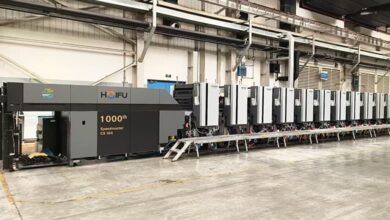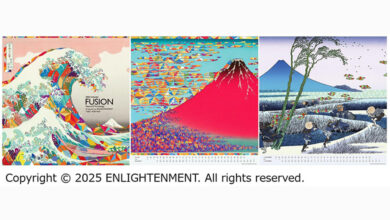The Rise of Digital Textile will be Evident at FESPA
Soft signage – banners, flags and similar visual communications – continues to show promise

From fashion and sportswear to home décor and soft signage, textile is currently the dominant growth application in the global wide format market, representing an exciting opportunity for print service providers. This growth can be viewed as a response to evolving demand in key segments: clothing, household textiles, displays and signage and technical textiles.
Soft signage – banners, flags and similar visual communications – continues to show promise as a segment where the creative freedom of digital production adds value. Household textiles, which covers upholstery, carpets and floor coverings, bed linen, and curtains, is also a fast developing market segment. Although it is smaller and slower growing than the other key areas, technical textiles still provide clear opportunities for both generalist and specialist print service providers (PSPs), with applications such as automotive fabrics and protective clothing both expanding.
In terms of both volume and value, clothing is the largest segment for digitally printed textile, with fashion, haute couture and sportswear representing the most lucrative sub-segments. This should not come as a surprise, as it is an investment in high-end digital printing equipment that is enabling the acceleration of fashion cycles, delivering photo-realistic images and bespoke detailed garments.
Fast turnaround on digital presses means retailers can order shorter initial runs, allowing swift re-orders on the fast-selling stock. This results in reduced warehousing costs and less risk of wastage of unsold inventory. This model can be extended even further for online retailers, with garments printed in very short runs as soon as orders have been placed.
Digital production is a perfect fit for today’s fast fashion industry. Brands competing for consumer spend means that the traditional two-season model has been effectively replaced by multiple mini-seasons, with new collections and launches for each one.
These changing trends in fashion are key drivers behind new direct-to-garment presses, which are being optimised for different types of clothing. Specialists in garment decoration and customisation can take full advantage of the capabilities of these machines to develop their print offering. Concurrently, advances in web-to-print ordering and job management software allow garment decorators to adopt just-in-time (JIT) delivery approaches, the benefits of which are manifold when it comes to cash flow, investment, reduction in stock holding, minimisation of warehouse space and general operational efficiencies.
It is also worth being aware of the increased demand for hardware and ink combinations that are efficient, cost-effective to install, offering the potential to upgrade as business develops. One of the limitations of digital textile printing to date has been the reliance on synthetic polyester fabrics, because of the binding properties of dye sublimation inks. New pigment inks suitable for fabrics such as cotton, silk, polyester, and lycra are gradually opening up new markets for digitally printable garments.
With ongoing market expansion and multiple opportunities in the fashion sector, there has never been a more opportune time for PSPs to invest in textile. PSPs interested in digital textile printing can take off with textile print at FESPA Global Print Expo 2018 (Messe Berlin, 15-18 May 2018).





